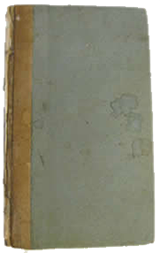
Wesley Shope, Spring 2011
First Principles of the Differential and Integral Calculus, or the Doctrine of Fluxions (1824)
Etienne Bézout
Published in 1824, this calculus book is based on a work by the French mathematician Bézout and was designed as a reference for students in Cambridge University.

Nasser Adem, Spring 2011
Arithmetic: Being a Sequel to First Lessons in Arithmetic (1822)
Warren Colburn
The book consists of two parts. The first part contains a course of examples for illustrations and application. The second contains a development of the principles. The audience of the book was intended to be eight to nine-year-old pupils. This would be grade 2 to grade 3 of the present day school age children.

Laveena Shertzer, Spring 2011
First Lessons in Algebra: Embracing the Elements of the Science (1839)
Charles Davies
The book was written to follow the teaching of arithmetic. The Algebra of M. Bourdon has been closely followed, modifying it, giving it a more practical and tangible form. The purpose was for use in common schools. Probably to be used by the teacher to instruct the class, the book covers all the material from a modern Algebra I textbook, as well as quadratics, arithmetic and geometric sequences, and logarithms. At the bottom of most pages, one will find extended thinking questions in which the teacher probably asked when instructing the students. Each concept is based around "word problems," giving a practical application of the concept. For each concept, there are very clear examples.

Laveena Shertzer, Spring 2011
Elementary Algebra: Embracing the First Principles of the Science (1858)
Charles Davies
This book is a newer edition of First Lessons in Algebra: Embracing the Elements of the Science. The layout is the same and begins with a very similar preface. Unlike the previous copy, this book includes an introductory lesson, which is a lesson in mental exercises to insure a student is prepared for the remainder of the course.

Laveena Shertzer, Spring 2011
An Introduction to Algebra: Being the First Part of a Course of Mathematics (1827)
Jeremiah Day
The materials covered in this book would encompass the same material covered in a modern Algebra I and Algebra II book. However, one needs to get through a lot of words to learn the material, unlike books of today with a lot of examples, diagrams, and colors. Handwritten materials is throughout the book, including the front and back covers.
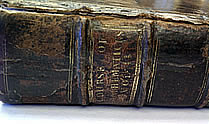
Roger Wolbert, Spring 2011
Second Volume of the Instructions Given in the Drawing School (1769)
Joseph Fenn
This volume contains three parts: I. History of Mathematics, II. Elementary of Numeral Arithmetic, and III. Elements of Specious Arithmetic. The general topics include an introduction to mathematics through a historical perspective, followed by theoretical and practical application of mathematics, ending with the fundamental rules and operations of mathematics. Although there are many examples in this book, it does not contain exercises that might be associated with textbooks. This volume was broken into two smaller books, also in the Rousseau Collection listed on this page.
- The Complete Account: Being a System of Arithmetic, Both Theoretical and Practical
- A New and Complete System of Algebra: Specious Arithmetic
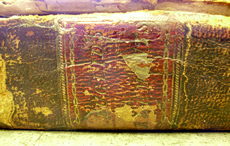
William Serson, Spring 2011
Euclid’s Elements of Geometry (1770s)
Edited by Joseph Fenn
A translation of Euclid’s Elements into the English language. As is evidenced on the title page, the editor makes every effort to preserve the content of the original translation in its entirety. This edition contains all twelve of Euclid’s original books.
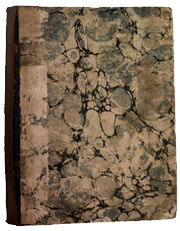
Roger Wolbert, Spring 2011
The Complete Account: Being a System of Arithmetic, Both Theoretical and Practical (1772)
Joseph Fenn
This book is the first part of Joseph Fenn's Second Volume of the Instructions Given in the Drawing School (1769). The second part of his book is also in the Rousseau Collection.

Roger Wolbert, Spring 2011
A New and Complete System of Algebra: Specious Arithmetic (1798)
Joseph Fenn
This book is the second part of Joseph Fenn's Second Volume of the Instructions Given in the Drawing School (1769). The first part of his book is also in the Rousseau Collection.

Brittnie Frey , Spring 2011
Two manuscript reports on the kindergarten system of education as thought by Frederick Fröbel (Mid-19th Century)
Friedrich Fröbel
This is a review of two manuscripts pertaining to lectures on Dr. Fröbel's kindergarten system.
- First Lecture on Kindergartening
- What Dr. Fröbel's system of kindergarten education is and how it can be introduced into our public schools
Additional Information - Manuscript Number: MS398

David Kelly, Spring 2011
Ciphering Book (1845)
Isaac Sheaffer
This is a mathematics textbook that contains rules to perform addition, subtraction, multiplication, and division.
Additional Information - Manuscript Number: MS398
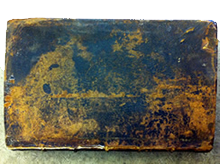
Devin Fortney, Spring 2011
The Young Mathematicians Guide: Being a Plain and Easy Introduction to the Mathematicks - 8th Ed. (1747)
John Ward
This book contains five main sections: Arithmetic, Algebra, The Elements of Geometry, Conic Sections and The Arithmetic of Infinites. Each section contains several chapters, and each chapter discusses a different mathematical topic relating to the section.